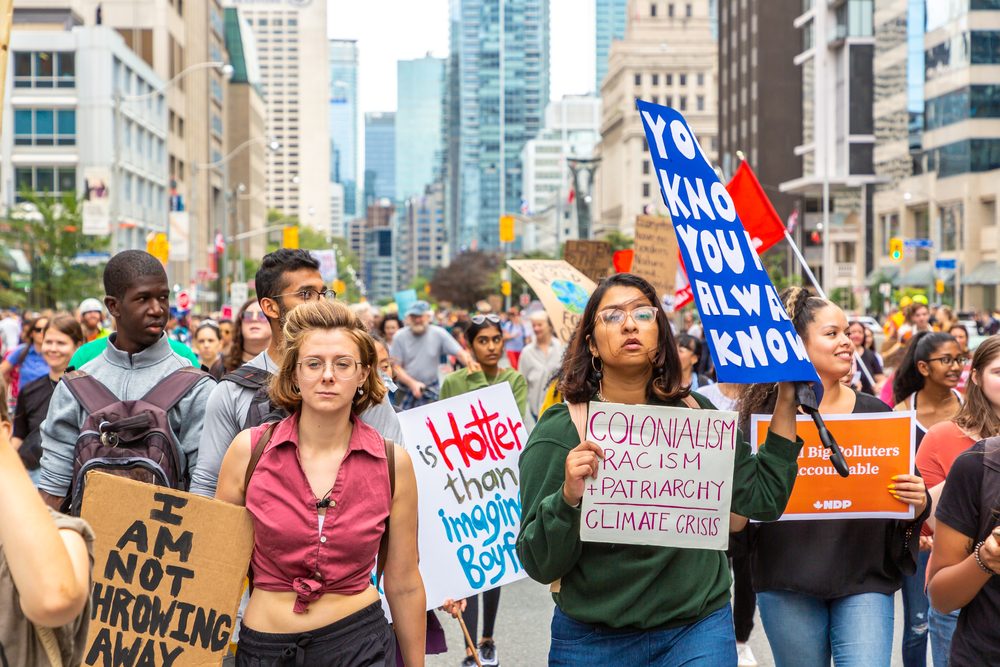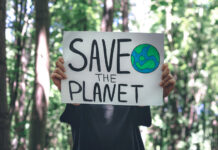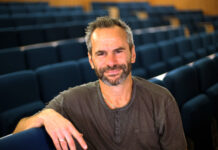Young people today are the vanguard for climate justice as they make up the generations most affected by climate change. However, they have the least political capital of any party in the conversation.
A 2020 article published by Leehi Yona and her colleagues addresses this issue with a “leverage points framework” that tackles specific, actionable problems and goals of youth climate activism to empower young climate justice advocates. The article’s authors keep the United Nations Framework Convention on Climate Change (UNFCCC) in mind and focus on how activism sparked by youth can be integrated into and acknowledged by the convention, rather than overlooked, as it often has been in the past.
“Within the UNFCCC COP [(conference of the parties)] meetings, there is a significant climate justice contingent among NGOs and observers. Organization coalitions, such as the Climate Action Network and Climate Justice Now!, list thousands of member groups and regularly organize press conferences, news events, and demonstrations within the UNFCCC space,” Yona writes.
“While youth have their own constituency, YOUNGO, within the COP, this constituency is not awarded as much influence as the overall ENGO constituency; as a matter of fact, youth tend to express that they are tokenized more than they are treated as stakeholders in this process.”

The UNFCCC is a global treaty that has championed fossil fuel emission regulations with measures that include the Kyoto Protocol and the Paris Agreement. Unfortunately, enforcing these regulations has proven difficult, and many nations have since failed to meet the goals at which they aimed. On the other hand, the authors cite movements started by young (age 35 and below) activists that have been widely regarded as successful, such as the Green New Deal, Fridays for the Future, and the Sunrise Movement.
With the international failure and grassroots success of climate justice in mind, it makes sense that researchers found young people distrust their governments due to widespread inaction and feel near-daily dread about climate change.
Simultaneously, popular narratives have taken hold that parade children as the future saviors of the planet, thus reducing the accountability of adults who still have time and power to make a change today. In other words, the baton of saving the world is already being passed to the next generation. Rather than deflecting the burden of responsibility again, Yona and her colleagues try to pave the way for youth success with their leverage points framework.
“Leverage points, the conceptual framework behind this approach, are a set of twelve mechanisms or ‘points of power’ that may help youth participants intervene in a complex system.”
In UNFCCC spaces, youth are often seen as “the moral voice” that shows contempt for negotiation processes as representatives may debate imbalanced economic impacts or feasibility of changes—older UNFCCC participants see the voice of young activists as homogenous, and they become marginalized as though youth do not understand what is at stake for the leaders involved in negotiations.
Seeing this as a problem, the researchers decided to interview young people participating in the UNFCCC COP. The authors asked 37 participants, including community organizers, academics, and policymakers. From these interviews, they discerned the ease or difficulty of acting upon each leverage point.
It’s worth noting that young people from non-governmental organizations (NGOs) were over-represented in this survey. The young people interviewed by the authors shared that they felt tokenized in the COP space, and many interviewees “could not provide examples of a time when they felt there was not a power imbalance within the COP space.”
“Youth groups aim to have an impact at the negotiations, but do so with very little funding, often relying entirely on volunteers and students for unpaid organizing. The cost of attendance at COPs–hostels, likely expensive travel–are prohibitive for many youth. As such, young participants are acutely aware of the inequitable distribution of resources at COP. Many noted the disparities between governments, where some countries could not afford to send more than a handful of delegates, while other countries were well staffed.
“One interviewee emphasized, ‘It’s inequitable. Smaller countries are not fairly represented. So there are countries who bring hundreds of staff, and then there’s some countries that can barely bring two.’”
This interviewee continued by citing the inequitable planning of the COP—at one point, there were 12 simultaneous conference sessions, and many groups, and also many nations, could not send that many delegates even to represent their party at each session. This means that the UNFCCC COP consistently and actively underrepresents parties who are not well-funded enough to attend in droves.
The researchers found that the most critical leverage points could be considered within the perceptions and paradigms held by UNFCCC COP participants. That is, interviewees reported an intentional “lack of power awarded to COP observers” and noted corruption created by corporate influence.
“Multiple interview participants mentioned corruption–referring both to certain countries and governments as well as corporate entities engaging with COP–as having a disproportionate influence on the UNFCCC process.”
The authors conclude by stressing that youth disempowerment at these climate change conferences is critical to the stagnation of climate justice. Seeking progress in climate justice is equivalent to empowering the young participants at the UNFCCC COP and empowering the voices of the underrepresented nations by creating more equitable bases for participation.
****
Yona, L., Dixon, M. D., Howarth, R. B., Kapuscinski, A. R., & Virginia, R. A. (2020). Applying a leverage points framework to the United Nations climate negotiations: The (dis)empowerment of youth participants. Elementa: Science of the Anthropocene, 8, 36. https://doi.org/10.1525/elementa.433 (Link)















The problem with climate change, the unrecognised problem, is that the general population is not responding in a coherent manner to oft repeated and increasingly strident warnings.
And it is not just warnings; even the most striking examples of its impact today; the destruction of the rain forests, the melting of glaciers and ice caps, the bleaching of the great coral reef in Australia, forest fires, droughts, and floods, all these are having little impact on public opinion. But why is this happening ?
One organisation has an answer, check out “Stop Selling the Desert”.
Report comment
Liam,
What are you saying?
Young people can’t change the power dynamic in climate justice. They’re all in their psychotherapists’ offices, confessing their anger and punching pillows and screaming at them. And they’re all working their Recovery Programs.
🙂 🙂 🙂
Joshua
Report comment
Nice article, gentle Liam.
We will only respond well to climate change when there is no “THEY”.
All “They-ing” is “blame”.
All blame is from anger.
All anger is from fear.
All fear is from fear of death.
All creatures do not have human fear of death. Creatures do not know intellectually that death exists. All creatures live in the now and so never panic about death. And so never get fearful. And so never get angry. And so never blame a “THEM”. And so never send a nuclear punishment to the ones who cause the thought that death is real and happens to all creatures. And since creatures never send the mushroom cloud of a billion antipsychotic iatrogenic harms to the “THEM” it means all fellow animals do not get tarred and feathered and incinerated and rendered into nothing more pronounced than shadows of radioactivity on a cave wall lit up with lovely charred paintings of animals.
To say “youth” this or “older generations” that, can be a loving embrace of difference…
…or yet more centuries of “THEM”
Report comment